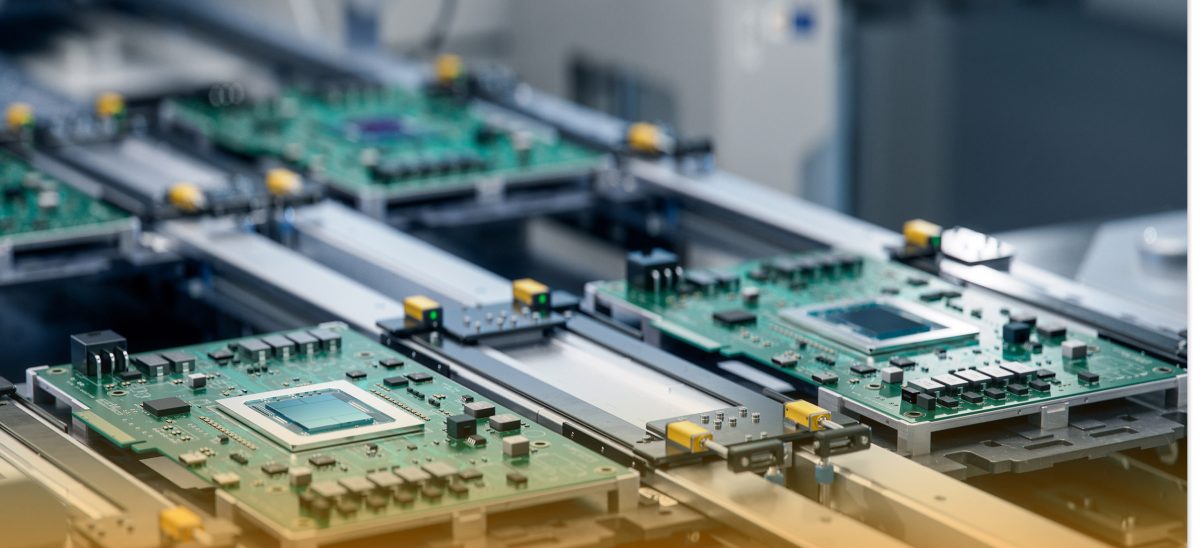Contents
- 1 Understanding PCB Assembly Standards
- 2 Key International PCB Assembly Standards
- 3 How PCB Assembly Standards Impact Quality and Reliability
- 4 Our Commitment to PCB Assembly Standards
- 5 How We Ensure Compliance With PCB Assembly Standards
- 6 Industry Trends and Updates in PCB Assembly Standards
- 7 Conclusion
Understanding PCB Assembly Standards
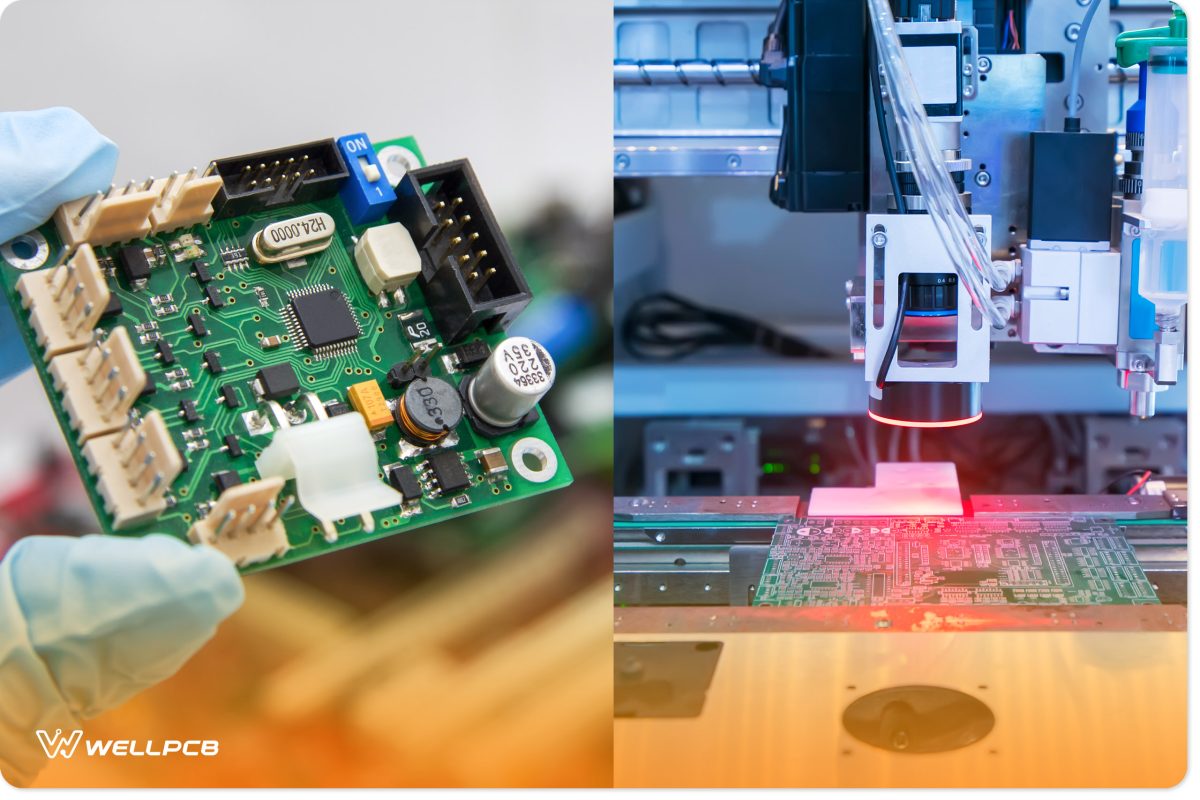
Let’s start with some context about PCB assembly services standards and why they are important.
What Are PCB Assembly Standards?
PCB assembly standards are specific guidelines provided by experts from professional bodies to standardize the mounting of components on circuit boards.
While different organizations may set varying standards, they all share a common goal: to ensure that PCB assemblies consistently meet high-quality benchmarks, resulting in reliable products across every assembly line.
Each PCB assembly standards body has its own history. The most notable IPC was founded in 1957 when six PCB manufacturing companies established it as the Institute of Printed Circuits.
Initially, IPC focused solely on PCB design and specifications. However, as the industry grew, it expanded its scope to include PCB assemblies as well.
In 1977, IPC changed its name to the Institute for Interconnecting and Packaging Electronic Circuits to reflect the involvement of more electronic assembly companies. In 1999, it adopted the simpler name IPC, with the tagline “Association Connecting Electronics Industries.”
Today, IPC standards apply broadly across PCB types, including innovations like and rigid-flex designs, which offer enhanced versatility and reliability for complex electronic applications.
Why Are PCB Assembly Standards Important?
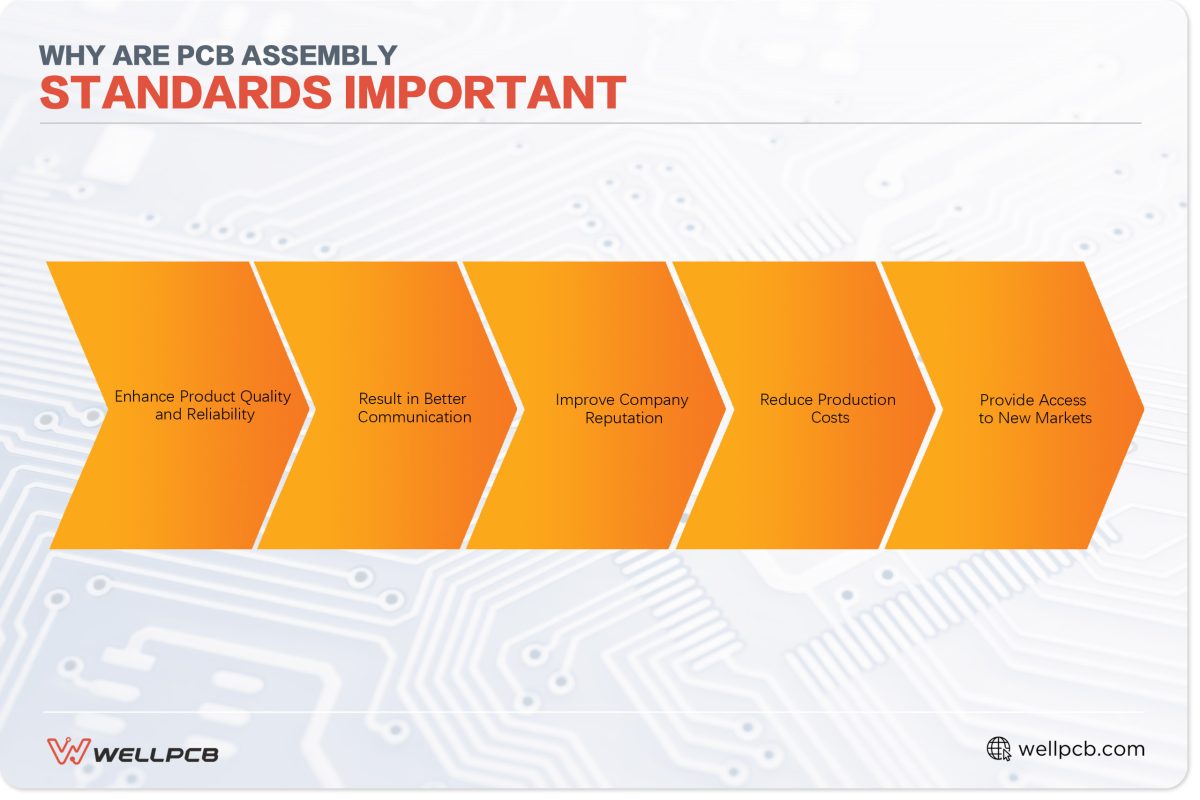
Why Are PCB Assembly Standards Important?
Complying with PCB assembly standards is essential for everyone, from designers and manufacturers to end-users. Following the guidelines laid out can:
Enhance Product Quality and Reliability
Assembly standards are designed to help PCB fabricators improve their manufacturing processes. In turn, this ensures PCBAs have a high build quality, such as in the solder joints.
These standards also specify inspection processes and guarantee that the assemblies are more reliable in their respective application areas.
Result in Better Communication
Adhering to standards, such as IPC, ensures customers, PCB designers, manufacturers, and assemblers communicate and coordinate based on known terminologies and agree on expectations. This smoothes out internal and external communication around the entire production process to prevent misinformation and simplify collaboration.
Improve Company Reputation
Since these standards are internationally recognized, adhering to them gives assembly companies instant credibility in the global market. They assure potential customers of the business’s commitment to quality and reliability.
Reduce Production Costs
The improvements that come about when you adhere to some standards can lower assembly costs.
For instance, following IPC’s quality checks and communication guidelines lead to fewer reworks and delays.
As a result, the manufacturer can increase production efficiency and reduce resource use while lowering costs.
Provide Access to New Markets
Adhering to standards like RoHS (more information below) makes your electronic assemblies acceptable in European markets. The more professional bodies you subscribe to, the broader your target market can become.
Key International PCB Assembly Standards
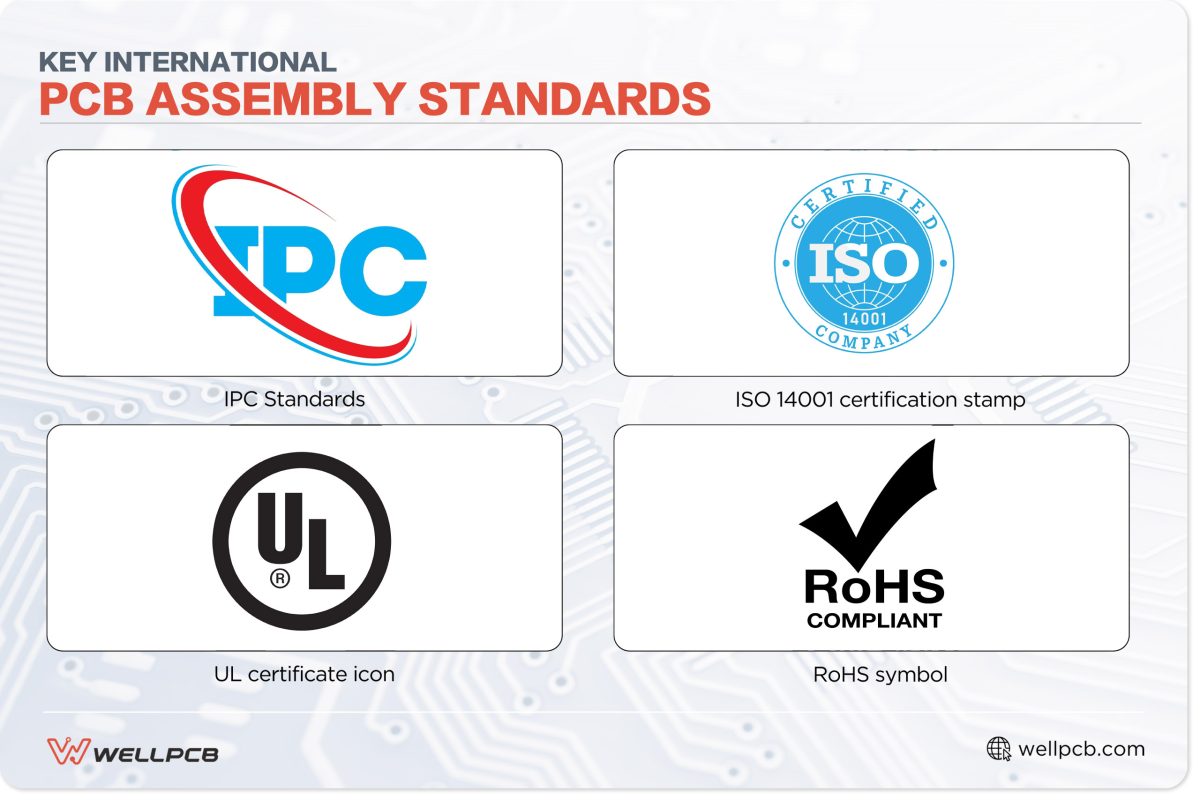
Below, we’ve outlined the renowned global standards that regulate PCB assembly.
IPC Standards
IPC is the industry benchmark, and IPC standards build on one another to cover most of the PCB design, fabrication, and assembly steps. You can separate these standards into three classes that define safety and performance specification levels of electronic products based on their application or use case. They include:
- Class 1 – General electronics: This is the lowest quality class that defines the primary requirements for each PCB assembly. It covers general consumer electronics like computer peripherals, budget-friendly radios, and toys. The principles behind this class are affordability and basic performance to make technology widely accessible.
- Class 2 – Dedicated service electronics: These devices must have high reliability and a long service life while enduring regular use. They include devices like smartphones, laptops, and kitchen appliances.
- Class 3 – High-performance electronics: Class 3 electronic assemblies are reserved for products that must not fail when in use. Equipment like medical life-support systems, military and aerospace devices must withstand harsh environments and abuse while remaining functional.
The key IPC standards for PCB assembly include the following:
IPC-A-610
The most widely used standard, IPC-A-610, provides the requirements for acceptance of PCB assemblies.
IPC-J-STD-001
IPC-J-STD-001 provides guidance on using X-rays to inspect the condition of solder joints that aren’t visible by any other means after mounting through-hole components. It has a companion document or handbook (IPC-HDBK-001) that provides guidance and supporting information.
IPC-J-STD-002
IPC-J-STD-002 prescribes defect definitions, test methods, illustrations, and visual acceptance criteria for assessing the solderability of component terminations, leads, solid wires, tabs, or lugs.
IPC-J-STD-005
The IPC-J-STD-005 standard defines the requirements for solder paste for surface-mount-device (SMD) assembly by defining the properties and specifications of test methods and inspection criteria. The accompanying handbook (IPC-HDBK-005) provides a guide for solder paste assessment.
IPC-J-STD-020
IPC-J-STD-020 identifies the classification level of non-hermetic surface-mount components that are sensitive to stress caused by moisture.
This classification ensures proper packaging, storage, and handling of these components to prevent damage during reflow attachment, repairs, or both.
IPC-J-STD-033
The IPC-J-STD-033 standard applies to SMD manufacturers and users, including assemblers.
It specifies the standardized methods for handling, packing, shipping, and using reflow or moisture-sensitive components.
This is to avoid damage resulting from moisture absorption and excessive heat from the reflow process.
IPC-J-STD-075
IPC-J-STD-075 builds on J-STD-020. It provides test methods for classifying passive and solid-state devices according to their limitations in terms of heating during the soldering process.
The classification shows the maximum sensitivity levels for the components when using wave or reflow soldering with lead-based or lead-free solder.
IPC-7525
IPC-7525 gives guidance on stencil design and fabrication.
IPC-7526
After solder paste printing, IPC-7526 addresses the required under-stencil cleanliness, the removal of solder paste from stencils after cleaning, and the cleaning considerations for misprinted printed circuit boards.
IPC-7527
The IPC-7527 standard provides the requirements for solder paste printing to help assemblers visually evaluate the process and optimize where possible.
Other notable IPC standards involved with PCB assembly are:
- IPC-J-STD-002
- IPC-J-STD-004
- IPC-J-STD-006
- IPC-SM-817
- IPC-CC-830
- IPC-HDBK-830
ISO Standards
Standards and certifications from the International Organization for Standardization provide frameworks for implementing quality management. The two that apply to PCB assembly are ISO 9001 and ISO 14001.
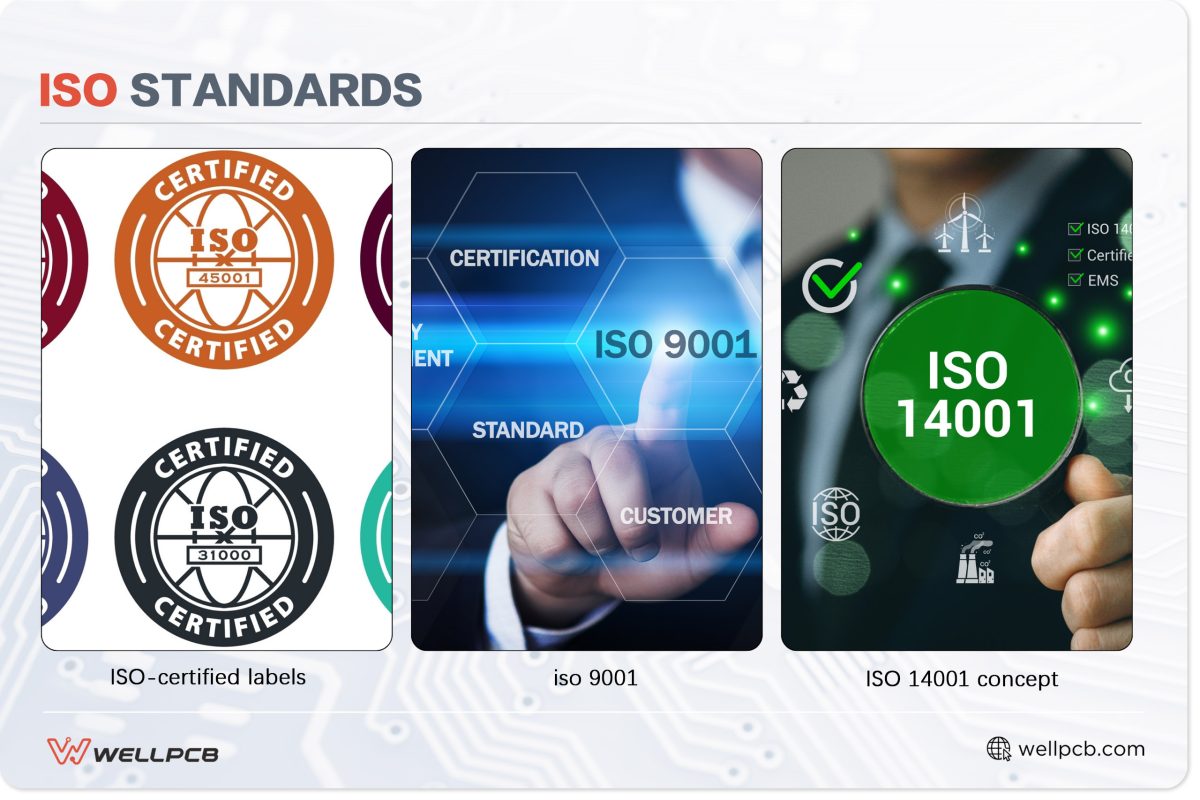
ISO standards
ISO 9001 defines requirements for organizations to establish, implement, maintain, and continuously improve quality management systems.
The standard helps assemblers enhance their performance to meet customer and stakeholder needs within the regulatory and statutory requirements related to the product, in this case, PCBAs.
On the other hand, ISO 14001 provides a framework for designing and implementing environmental management systems.
This framework covers waste management, resource utilization, environmental performance monitoring, and stakeholder involvement in eco-friendly commitments.
PCB assemblers that adhere to this standard take proactive measures to reduce their environmental footprint, achieve environmental objectives, and comply with the relevant legal requirements.
Other Relevant Standards
The other relevant PCB assembly standards are UL and RoHS.
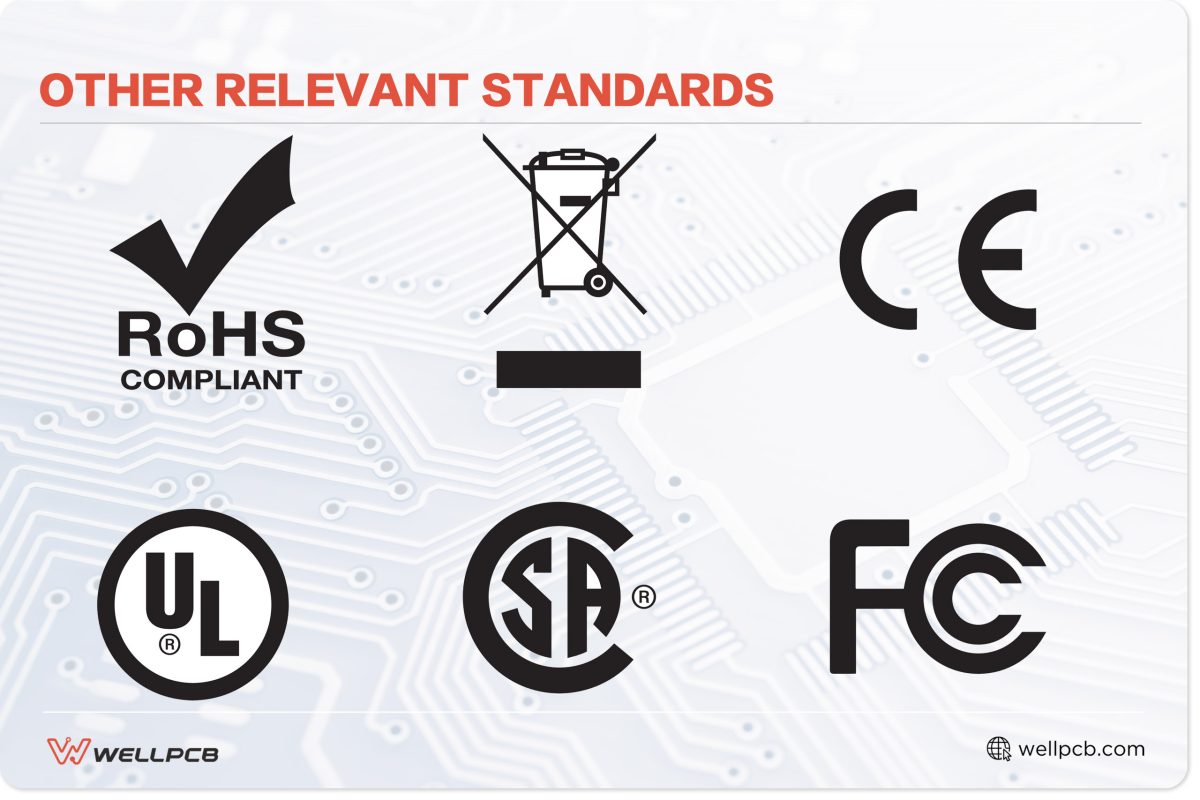
Industrial certificate standard safety logo
UL (Underwriters Laboratories) standards all relate to product safety for consumers. The relevant ones that apply to electronic assemblies include:
- UL 796: Covers printed wiring board guidelines for standard metal-based, rigid, and HDI PCBs.
- UL 796F: Further extends UL 796 to cover flexible material electronics. These include flex and rigid-flex PCBs.
RoHS stands for Restriction of Hazardous Substances.
Enacted as a law in 2003 by the EU, RoHS restricts the use of specific hazardous substances in electronic products, including PCB assemblies.
In PCB assembly, the primary focus is reducing solder lead content. For products to be compliant with the standard, lead levels must be below 1000 ppm. Most PCB assemblers have shifted to using lead-free solder to meet these requirements.
How PCB Assembly Standards Impact Quality and Reliability
Adhering to the various electronic assembly standards helps PCB assemblers provide quality assurance and product reliability in the following ways:
Ensures Consistency and Precision
IPC standards are pivotal in ensuring that electronic components are assembled with consistent precision on every board produced.
For example, IPC-A-610 outlines the requirements for component placement, as well as guidelines for soldering, cleaning, coating, marking, and labeling circuit boards across through-hole, surface-mount, and mixed-technology assemblies.
This holistic guidance on the entire component mounting and soldering processes brings about precision and ensures the PCBs’ uniform appearance while delivering steady performance.
Reduces Defects and Failures
Bridging, tombstoning, excessive solder paste, cold joints, lifted/missing pads, polarity reversal, and missing components are common defects that can occur during or after assembly.
All the IPC standards focusing on stencil design and solder paste requirements help reduce defects and failures.
They standardize the solder paste application process, preventing issues like bridging and tombstoning.
As for component checking, IPC standards provide guidelines for inspecting the boards to ensure every part is on board and placed correctly.
Enhances Product Lifespan
A combination of consistency, precision, and reduced defects make the PCBAs durable and more reliable, resulting in a high-quality end product with a long lifespan.
Our Commitment to PCB Assembly Standards
WellPCB proudly upholds the highest standards during the manufacturing and assembly process.
Our Quality Control Measures
Our ISO 14001:2015 and ISO 9001:2015 certifications ensure that quality control and environmental consciousness are at the forefront of our assembly processes.
All our products pass the IPC and RoHS standards and emerge from the production line as UL-certified.
This way, you can be sure of quality, reliability, environmental friendliness, and safety when in use.
We strive to manufacture and assemble world-class electronic components.
One way we ensure this is possible is by having an internal team of quality control auditors. This team runs multiple reliability tests on each product before shipping.
Overall, we look for at least 98% positive evaluation and satisfaction before releasing the assembled and finished PCBs to our customers.
Should any defect occur in a product from our assembly lines, our 5-star customer care team is on hand to help with returns.
Proprietary Techniques and Technologies
We provide turnkey and rapid turnaround PCB assembly services. Our equipment can place up to 600,000 chips per hour, with the minimum diameter and spacing of BGA ICs (Ball Grid Array Integrated Circuits) being 0.2mm and 0.35mm, respectively.
The same machines can also handle thinner QFPs (Quad Flat Packages) with a minimum diameter of 0.15mm and a spacing of 0.25mm.
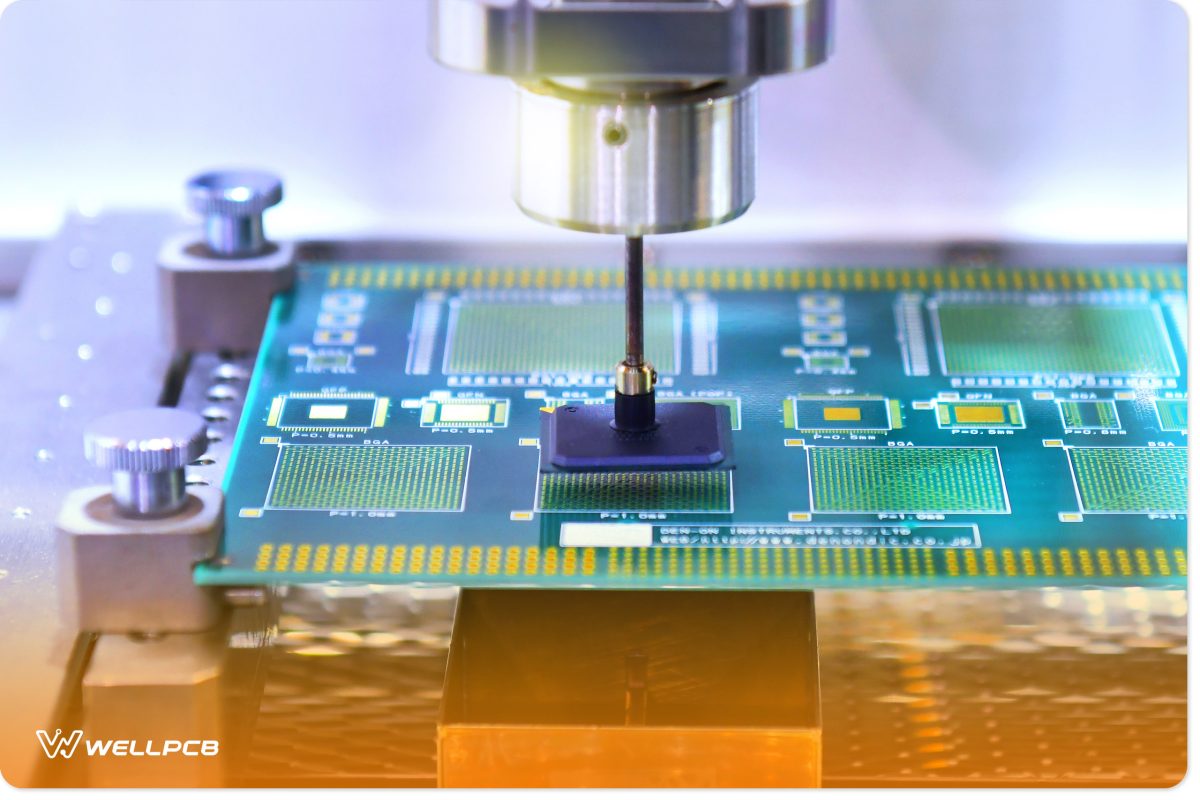
An automated solder machine assembling chips on a PCB
All these mounting processes have high accuracies, with a deviation lower than 30µm.
Before releasing the electronic assemblies, each PCB undergoes several reliability tests, including flying probe, impedance, thermal shock, hole resistance, and solderability.
These techniques and technologies ensure we adhere to all assembly standards, resulting in durable and reliable PCBs with optimal performance.
How We Ensure Compliance With PCB Assembly Standards
We follow these steps and processes to ensure your PCBs meet assembly standards.
Design for Compliance
We prepare early in the design process to ensure we comply with the PCB assembly standards.
Whether you send us your designs or request that we handle this stage for you, we strictly follow IPC standards, starting with those that cover circuit design (including IPC-2221, 2222, and 2223).
Our software tools for this process include Altium Designer, Eagle, Cadence, and KiCad. These can encode the required standards as design rules to ensure the layouts comply.
Manufacturing Best Practices
After that, it’s onto manufacturing, where we follow the relevant IPC specifications, such as IPC-4101, 4104, 4202, and 4203. But unlike design, where you can encode the requirements, the PCB manufacturing process is a bit trickier.
Firstly and most importantly, it’s crucial to have all the personnel involved in this process undergo the latest training and certifications for the standards.
For instance, with IPC, our technicians and engineers undergo recertification every two years to ensure they know the latest changes and improvements.
Secondly, we’ve specialized in developing high-precision, multilayer, special-process printed circuit boards.
We also invest heavily in research and development to remain at the forefront of the PCB manufacturing industry.
Thirdly, we follow the standard best practices for PCB manufacturing.
This includes thermal management, thorough DFM analysis, dedicated power and ground planes, and etching traces in the required widths to eliminate heating and electrical issues.
All of these closely tie to the design process.
Regular Audits and Inspections
Even with our strict adherence to PCB design, manufacturing, assembly, and warehousing logistics standards, we regularly evaluate ourselves to ensure the systems work.
WellPCB has an internal team of quality control auditors who run multiple tests on each PCB before it leaves our manufacturing or assembly plants. The tests include:
- In-Circuit Testing (ICT).
- Flying probe testing.
- Functional testing (contamination and solderability).
- Burn-in testing.
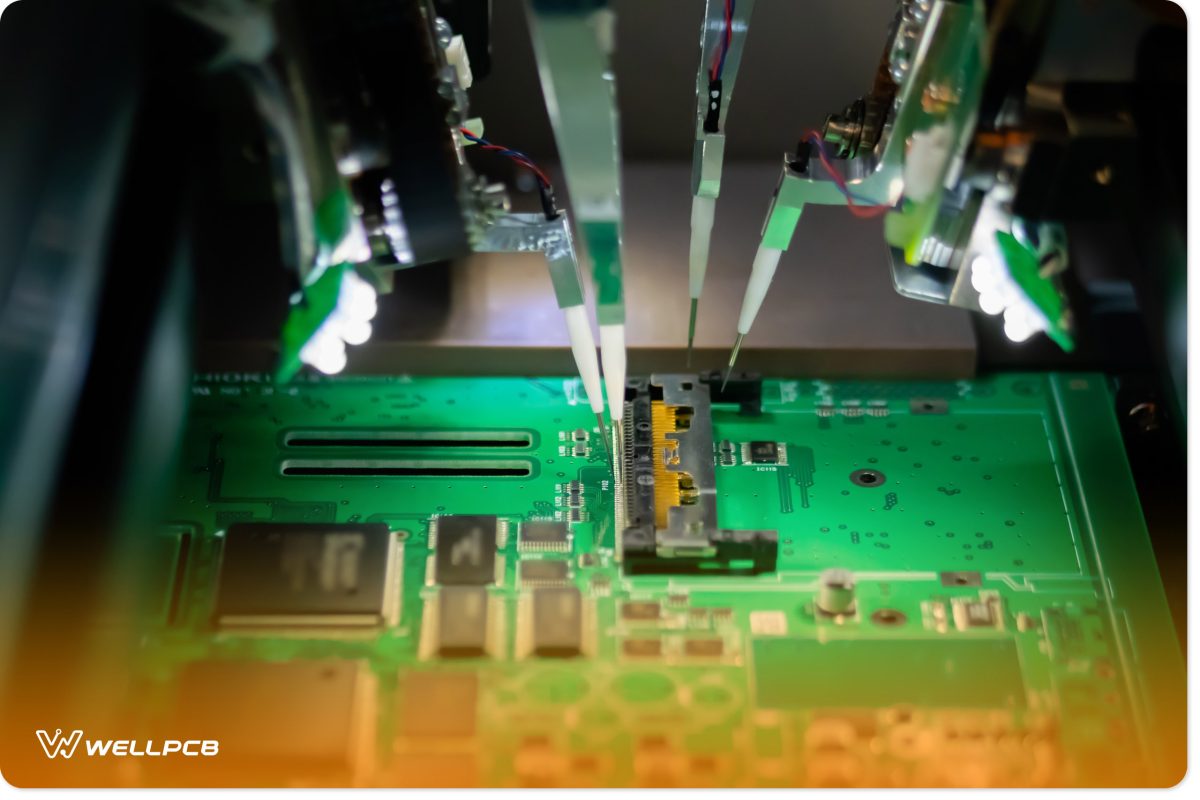
Flying probe testing
These tests are accompanied by various inspection methods, such as X-ray and Automated Optical Inspection (AOI).
Industry Trends and Updates in PCB Assembly Standards
Understanding how standards are evolving is key to staying at the forefront of the global electronics industry.
Recent Changes in Standards
All the relevant standards that apply to PCB assembly are updated regularly, which is why IPC certifications expire every two years.
Most have revisions; for example, IPC-7525 is at revision C, published in 2021, making revisions A and B outdated.
With ISO, both ISO 9001 and 14001 were published in 2015 and were last reviewed and confirmed in 2021, making them the current versions.
These regular updates introduce changes that keep up with the times.
In doing so, they help maintain product quality and reliability, enhance quality management, and ensure stricter adherence to environmental protection.
Future Trends To Watch
If the recent changes in PCB assembly standards are anything to go by, the future trends to watch out for include the integration of more advanced PCB technologies, such as miniaturization, embedded components, and high-performance materials, in upcoming revisions.
As PCB manufacturers and assemblers, we stay ahead of the game by investing heavily in research and development, which enables us to have the latest knowledge in our field.
Remember, PCB assembly standards bodies have experts who craft these guidelines, so advancing our expertise keeps us a step ahead.
Conclusion
In conclusion, the most important standards for PCB assembly are IPC, ISO, UL, and RoHS.
IPC ensures the board’s high build quality, while ISO certifications assure customers of quality and environmental management systems.
RoHS standards are also geared toward protecting the environment because they restrict the use of harmful substances when assembling electronic equipment.
Lastly, UL focuses on product safety by testing them to applicable standards.
Combined, these standards improve a PCB’s quality and reliability while reducing production costs, which results in a lower price per board.
The standards have other benefits, but these are the most critical.
Get Started With Our PCB Assembly Services
Knowing these standards is one thing; adhering to them is another.
At WellPCB, we are committed to quality and strictly follow these standards from PCB design to manufacturing, assembly, and warehousing.
Contact us today with your PCB idea, request, or design files. We’ll help you start the production process, which includes assembly using the PCB standards we’ve explained above.
